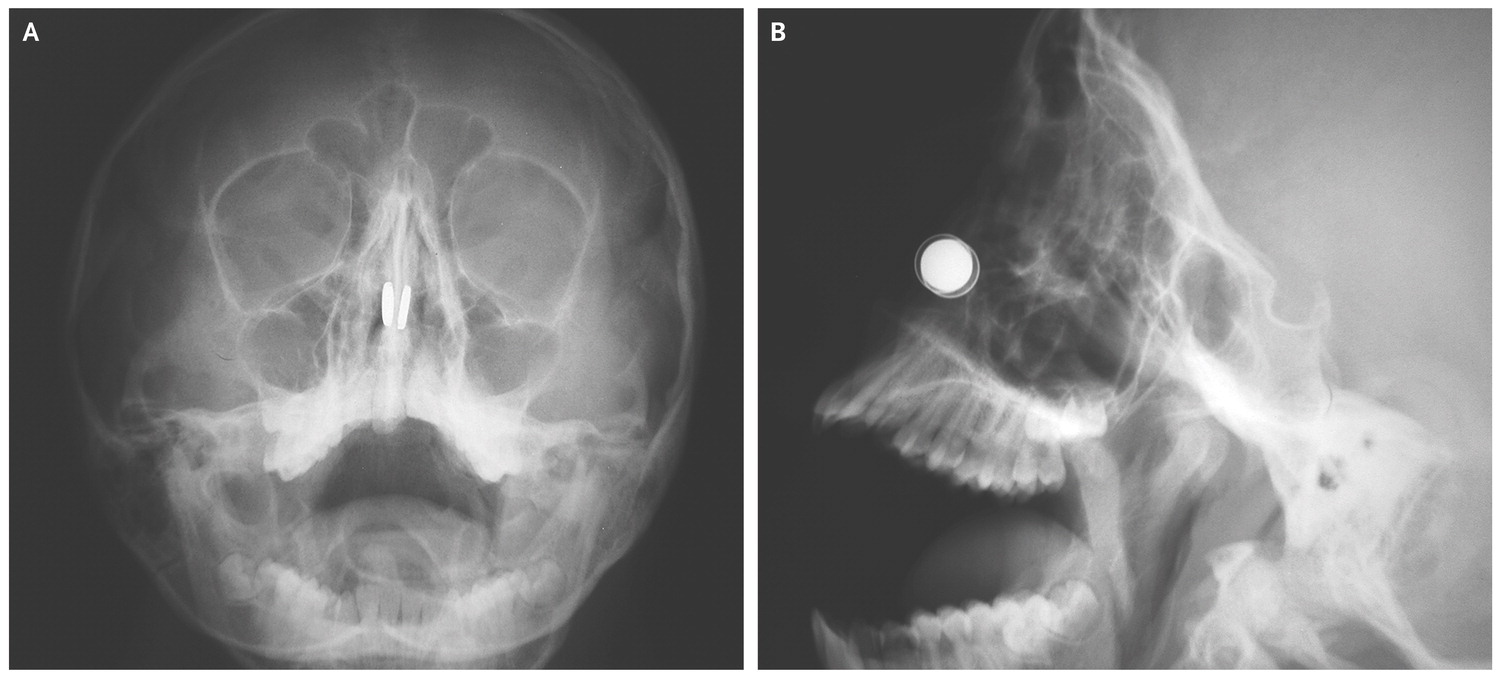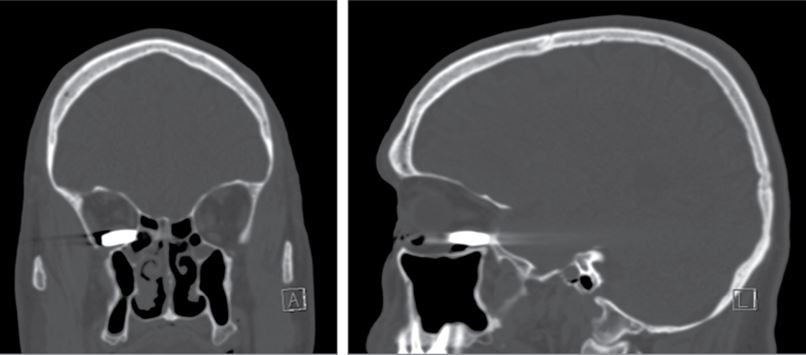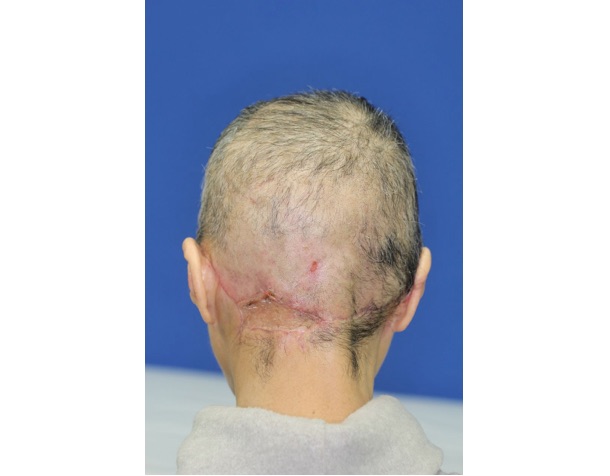The 10 Strangest Medical Cases of 2017
Strange medicine in 2017

From a woman who sweats blood to a man with a giant stone in his bladder, a number of intriguing medical cases made headlines in 2017.
As descriptions of individual patients, medical case reports lack the rigor of scientific studies with hundreds or thousands of people. But these reports can help doctors better understand rare diseases or spot unusual signs of common conditions. Case reports may also reveal potentially harmful effects of treatments or procedures.
Here are 10 of the strangest case reports Live Science covered in 2017.
Munching on metal

A 52-year-old man in France was found to have more than 100 pieces of metal in his stomach, including nails, knives, screws and coins.
The man went to the emergency room five times over a five-year period with various symptoms, including stomach pain, nausea and vomiting up blood. Doctors needed to operate on four of those occasions to remove the massive clumps of indigestible material — in this case, metal — known as "bezoars." That includes the occasion when they found the more than 100 metal pieces. These clumps were so large that they prevented the man's stomach from emptying.
The man was diagnosed with psychosis, which means losing touch with reality.
He recovered from his surgeries and was referred to behavioral and mental health providers for further treatment. The case was published Sept. 27 in the journal BMJ Case Reports.
Get the world’s most fascinating discoveries delivered straight to your inbox.
Sweating blood

A 21-year-old woman in Italy was diagnosed with a mysterious condition that causes her to sweat blood. The woman periodically experienced bleeding from her face and palms, without any cuts or skin lesions.
While the woman was in the hospital, her doctors observed an episode in which bloodstained fluid oozed from her face. She was diagnosed with hematohidrosis, a rare condition that has been reported just 42 times since 1880.
The cause of the condition is unknown. Some researchers have hypothesized that increased pressure in blood vessels causes blood cells to pass out of the blood vessels and into the ducts of the sweat glands. Other scientists have speculated that the condition may result from the activation of the body's "fight or flight" response, which in rare cases may also cause the rupture of small blood vessels.
A report of the case was published Oct. 23 in the Canadian Medical Association Journal.
A dangerous "eyeball tattoo"

A 24-year-old model experienced serious complications after she got an “eyeball tattoo," a procedure that experts say is unsafe.
The model, Catt Gallinger, had purple tattoo ink injected into the white part of her eye, a practice known as "sclera tattooing." But she soon experienced serious symptoms, including blurry vision, eye pain, swelling and the oozing of purple liquid (colored by the tattoo ink) from her eye.
Gallinger was put on medications to help with her eye pain, along with antibiotics and steroids, and she later underwent surgery to remove excess ink from her eye, according to her Facebook posts. Following the surgery, she said her eye finally appeared to be getting better and she was experiencing less pain than before.
Some of the risks of eyeball tattoos include vision loss or blindness, infection from the ink, sensitivity to light, and a potential loss of the eyeball, according to the American Academy of Ophthalmology.
An oversize bladder stone

Bladder stones are mineral masses that form in the bladder, and they can range in size from nearly microscopic to an inch or more in diameter.
One California man was found to have an exceptionally large stone; it was nearly the size of an ostrich egg. The stone measured 4.7 inches by 3.7 inches by 3 inches (12 by 9.5 by 7.5 centimeters) and weighed a whopping 1.7 lbs. (770 grams).
More than a decade earlier, the man had required surgery to remove his bladder as a treatment for bladder cancer. During that surgery, doctors used segments of the man's intestine to create a "neobladder." Such a neobladder can function as a replacement bladder, but it increases the risk of developing bladder stones.
Doctors performed surgery to remove the bladder stone, and the man had no complications from the surgery. The report was published Sept. 6 in The New England Journal of Medicine.
Magnets in the nose

Magnets can be hazardous toys for children. Just take the case of an 11-year-old boy in Cyprus who, while playing with button magnets, inserted two of the flat, circular objects up his nose.
With one magnet in each nostril, the two magnets were attracted together, and began pinching the wall between the boy's nostrils, called the nasal septum.
The boy was taken to the emergency room, where he arrived with symptoms of bleeding and severe pain in his nose.
He required surgery to remove the magnets and to treat an area in his nose that had been damaged. When the boy came back for a checkup six months later, his nose had fully healed.
A report of the case was published Oct. 25 in The New England Journal of Medicine.
Migration of an IUD into the bladder

Intrauterine devices (IUDs) are generally very safe and effective as a method for preventing pregnancy. But in a rare case, an IUD migrated from a woman in China's uterus to her bladder.
When the 26-year-old woman went to the hospital with bladder problems, doctors performed an X-ray of her pelvis and saw she had an IUD in her bladder. (The IUD had been inserted six years prior, but the device apparently failed, and she became pregnant. During a cesarean section to deliver the baby, doctors didn't see any signs of the IUD at the time.)
The device apparently went through the wall of the uterus, and once it was in the pelvic cavity, it went through the wall of the bladder, according to a report of the case that was published in the October issue of the journal Medicine. The woman had a procedure to remove the IUD from her bladder and did not experience any further complications.
Pregnancy with an IUD is rare, occurring in less than 1 percent of women who use the devices per year. Rarer still is perforation of the uterus by an IUD, which happens in about 1 in 1,000 women who get the devices.
A bullet lands in man's eye socket

When a 45-year-old man was shot at with a 0.22-caliber pistol, the bullet traveled through a wooden door and came to rest in the man's eye socket.
Doctors captured a striking image of the bullet lodged in the man's eye socket. The bullet did not fracture the man's skull.
The man was in severe pain when he arrived at the emergency room. Doctors could see an entry wound for the bullet in the corner of the man's eye, and there was damage to the tear ducts in the eyelid.
The man had surgery to remove the bullet and repair the damage to the tear ducts. Afterward, the man's pain lessened rapidly, and his vision wasn't affected by the bullet, according to the report of the case, which was published Nov. 30 in the journal JAMA Ophthalmology.
A woman's scalp is torn off, then reattached

In a gruesome accident, a woman had her entire scalp detached from her head when her hair got caught in a spinning machine.
During the accident, the woman's scalp was torn off from the top of her nose to the back of her head. The tops of both her ears also came off along with the scalp.
But her scalp was salvaged in a plastic bag with ice, and surgeons were able to reattach it to her head.
Following the surgery, the 64-year-old woman made an "amazing" recovery, her doctors said. One year after the accident, she had sufficient hair growth on her scalp, and she was able to open and close both her eyes. She told her doctors that she didn't have problems with her daily activities as a result of the accident.
The case was published Oct. 24 in the journal BMJ Case Reports.
One eye, 27 contact lenses

A 67-year-old woman in England was found to have a whopping 27 contact lenses in one eye.
The woman was about to have cataract surgery when her doctors saw a "blueish" foreign object under her upper eyelid. The object turned out to be a mass of 17 contact lenses, and then her doctors discovered another 10 contacts in the same eye.
The woman told her doctors that she had discomfort in that eye, but thought it was due to dry eye and old age. The doctors postponed the surgery because the glob of contact lenses could have allowed bacteria to accumulate in the woman's eye.
The case was published July 5 in the journal The BMJ.
A tattoo sparks an ethics debate

A Florida man's unusual tattoo sparked an ethical debate among his doctors. The man, who arrived unconscious at the hospital, had the words "do not resuscitate" tattooed on his chest.
His doctors were torn: Should they honor the tattoo, without an official "do not resuscitate" (DNR) order? Or should they plan to resuscitate the man anyway, since they were uncertain if the tattoo really reflected his wishes?
A medical ethics expert advised the doctors to honor the patient's tattoo, because it was reasonable to assume the tattoo "expressed an authentic preference."
Later, the hospital found that the man actually did have an official DNR order with the Florida Department of Health. The man's condition soon deteriorated, and he died without undergoing CPR or invasive life-support methods, according to his wishes.
A report of the case was published Nov. 30 in The New England Journal of Medicine.

Rachael is a Live Science contributor, and was a former channel editor and senior writer for Live Science between 2010 and 2022. She has a master's degree in journalism from New York University's Science, Health and Environmental Reporting Program. She also holds a B.S. in molecular biology and an M.S. in biology from the University of California, San Diego. Her work has appeared in Scienceline, The Washington Post and Scientific American.


